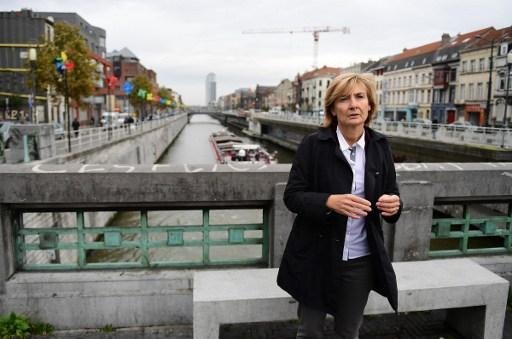Federal police collaboration with local authorities is currently stronger than a year ago. At that time it was essentially fed by federal police suspicion.
This is the view asserted by the Mayor of Molenbeek-Saint-Jean and Brussels parliament deputy, Françoise Schepmans (MR), as we approach the first anniversary of the Brussels attacks.
Ms Schepmans says that she now has more information available to her on the individuals with links to violent radicalism. This is thanks to the integrated local security cell.
She says, “Of course, we are preparing to commemorate the tragic events of March 22nd. However, Molenbeek felt the full force of the impact of the attacks from the day after the Paris attacks on November 13th. This was both within the broader context of violent radicalism and its ramifications. These went right to the heart of the commune. On November 14th, 2015, the municipal square was literally full of people.”
The commune’s Mayor explains, “Following criticism from France with respect to the Belgian authorities, there then came Jambon's remarks: ‘We are going to clean up Molenbeek.’ There then followed an intense period in relation to the aftermath of the attacks, marked by their consequences for Molenbeek, through to the 2016 summer holidays. However, since then the normal daily routine has overcome the tragedy.”
As she looks back over the past year, Françoise Schepmans is delighted with the important role played by the local police and the commune's Prevention Service in the area during successive searches. Both services have, in particular, made a major contribution to explaining to the Belgian population what has been happening. This has assisted with reducing the tension.
The Mayor says that the main benefit of the “Plan Canal”, initially decided at federal level, was in the strengthening of the Brussels police force from 34 to 48 men. This allowed them to better understand the situation by contributing to enquiries at particular addresses and breaking down the searches within blocks of flats. There were 5,000 flats and 16,000 inhabitants identified. Recording so-called not-for-profit associations (a total of 800 of which 102 were considered problematic) has also helped. She also stresses that the provision of individuals, who are skilled and trained in dealing with the radicalisation phenomenon, is a further factor which has assisted.
However, significant major work has been undertaken in all departments of the commune.
Françoise Schepmans considers that the fight against radicalisation amongst youngsters requires joined up and coordinated action, especially within community and regional bodies. She feels this phenomenon results from a lack of upbringing, training, and life goals. Moreover, she says that this merits both an analysis and a better understanding about the influence of communalism.
The Brussels Times

